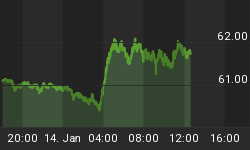With our economy sagging and our international clout waning, one of the few assets upon which the United States can rely is the confidence that the rest of the world has traditionally showered upon us. That confidence is the reason why the US dollar was elevated to global reserve status more than 65 years ago.
With so much riding on perception, Treasury Secretary Tim Geithner's recent statements denying the existence of a dollar debasement campaign could not be seen as anything less than foolhardy.
Responding to a critique made in a Financial Times opinion piece by former Fed Chairman Alan Greenspan, Geithner asserted, "We will never seek to weaken our currency as a tool to gain competitive advantage or to grow the economy." Instead, he attributed recent dollar weakness to the reversal of "safe haven" capital flows that had been legion during the financial crisis but which have abated as the global economy has recovered.
One must scour the earth with great care to find an individual who would agree with Mr. Geithner on this point. It's clear from myriad other actions that the Administration sees a weaker dollar as a panacea for our economic problems. The blatant misinformation relayed by the Treasury Secretary can only serve to further increase already high tensions at the G-20 summit now underway in Seoul, South Korea.
Over at the Federal Reserve, Chairman Bernanke doesn't talk about currency debasement. Instead, he extols the virtues of "pushing up inflation to levels consistent with our mandate." He hopes that no one will understand that he is using different adjectives to describe the same action. With the possible exception of the New York Times editorial board, he is fooling no one.
Given that the Administration and the Fed are prepared to sacrifice precious credibility for the goal of currency debasement, many may assume that there is some benefit for America that would be derived from a weaker dollar. Unfortunately, there isn't.
Advocates of a weaker dollar point to two claimed advantages offered by a falling currency.
First, and most obviously, proponents claim that cheap dollars would reduce the prices of US exports, making them increasingly competitive. That is partially correct. While lowering prices may help to spur sales in the short-term, it does not necessarily improve the long-term prospects of the seller.
Exporters (and all other businesses for that matter) that focus on selling on price competitiveness alone ignore other vital elements of the marketing mix, such as innovation, design, quality, delivery, and after-sales service. For example, Germany and Japan have developed world leading export volumes without relying on price as their primary advantage.
History shows that, over the medium- to long-term, a devalued currency leads to increased trade deficits. Furthermore, a currency debasement policy for the US dollar, still the world's reserve currency, is bound to spark a climate of international competitive devaluation - a currency war - as each nation fights to protect its balance of trade. If not corrected, such currency battles lead all too easily to trade wars, and they, in turn, often result in armed conflict.
The second, and more compelling, argument for Washington to pursue currency debasement is that a devalued dollar would wipe out large amounts of dollar debt. This amounts to a huge subsidy to debtors at the expense of savers, and no one owes more than the US government.
When measured against the standard basket of currencies, the US dollar has fallen by some 30 percent over the past decade. However, most of those currencies are also depreciating in real terms. So what is real? Most likely, precious metals' prices, discounted somewhat to allow for investor speculation, represent an absolute measure. Silver has risen by some 56 percent in the past 10 months. Gold has gained some 30 percent this year, and some 400 percent over the past decade!
So if we assume a conservative 40 percent devaluation of the US dollar over the past ten years, our current $13.4 trillion federal debt is equivalent to an only $8 trillion liability in 2001 dollars - the rest is just inflation. The $189 trillion of unfunded obligations to Social Security, Medicare, government pensions, etc. would appear as $113 trillion a decade ago!
It is clear that a debased currency suits the US government, but what of Americans? The 40 percent devaluation equates to a 40 percent tax on every holder of US dollars, rich and poor alike. It has hindered, rather than encouraged, consumer spending. It forces Americans to make do with less, purchase shoddier products, and deal with inferior service. Sometimes it's hard to perceive slowly ebbing living standards, but take a look around and think whether you feel richer than a decade ago.
If dollar devaluation becomes too pronounced, Washington threatens to kill the goose that lays the golden eggs: namely, the dollar's reserve status. If that were to happen, a global financial crisis of staggering intensity would surely erupt, the resolution of which would not favor the United States.
Whether or not it is openly acknowledged, the US government is pursuing a policy of great risk that offers no reward at the end of the tunnel. It's the worst of all possible worlds. Wise investors will reduce still further their exposure to US dollars and debt, while increasing their allocations to precious metals, key commodities, hard currencies, and emerging markets. Wise governments are already doing so.
For in-depth analysis of this and other investment topics, subscribe to Peter Schiff's Global Investor Newsletter. Click here for your free subscription.
Click here to download Peter's latest Special Report: My Five Favorite Gold & Silver Mining Stocks.
Be sure to pick up a copy of Peter Schiff's just-released economic fable, How an Economy Grows and Why It Crashes. Click here to learn more and order.
















